A majorly expanded, greener and free public transport system, or more climate catastrophe: which would you choose?

Stark Warnings
Last August the Intergovernmental Panel on Climate Change published the first study of its sixth assessment report, which found that it is only possible to avoid warming of 1.5 °C or 2 °C if massive and immediate cuts in greenhouse gas emissions are made. The Secretary-General of the UN, António Guterres, called the report “code red for humanity”. In February the second report entitled Climate Change 2022: Impacts, Adaptation & Vulnerability was published. While the first report focused mainly on the science and stats of possible temperature rises and recommendations on how to mitigate this, the second report focused on the effects of said temperature rises. This includes: biodiversity loss, risks to urban and rural activities, human health, food security, water scarcity, and energy. The report found that climate impacts are at the high end of previous estimates, with all parts of the world being affected. At least 3.3 billion people, about 40% of the world population, now fall into the most serious category of ‘highly vulnerable’, with the worst effects in the developing world. After the release of the second report, Guterres said it was “an atlas of human suffering and a damning indictment of failed climate leadership.” He also said “the facts are undeniable; the world’s biggest polluters are guilty of arson of our only home.” This is rightfully strong rhetoric and these are rightfully stark warnings, and need to be acted on.
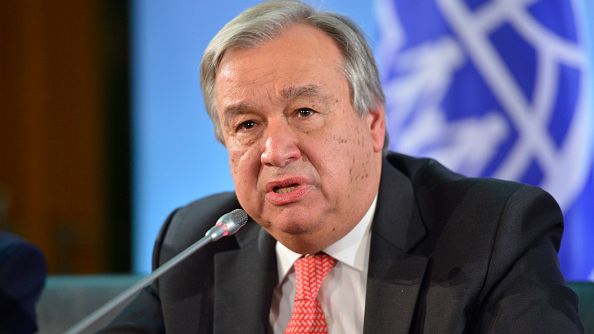
Image: Michael Gottschalk/ Getty
The current transport situation
In the UK and the US, the transport sector is now responsible for emitting more greenhouse gases than any other, including electricity production and agriculture. Globally, transport accounts for around a quarter of CO2 emissions, and in Ireland it is 17.9%, second only to agriculture, broken down by sector.
Road vehicles: cars, trucks, buses and motorbikes – account for nearly three quarters of the greenhouse gas emissions that come from transport. Here in Ireland, emissions from road vehicles account for up to 94% of transport emissions. Change is needed, and a majorly expanded, greener and free public transport system is the answer.
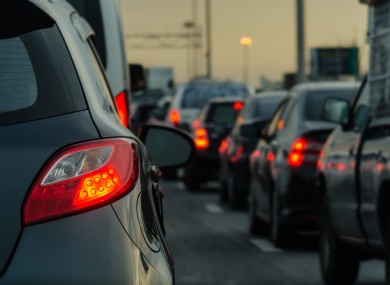
Why can public transport be so great?
First of all, public transport is more efficient. You can get more people from A to B and take up less space than if they were all in cars. Along with this if you make it free more people will use it. If more people use it, there are less cars on the road which means less congestion and more space for public transport, which means it can travel quicker.
The most important reason is what I brought up above: Climate change. I mentioned that road transport makes up 94% of transport emissions. What I didn’t mention was that 59% of transport emissions alone come from cars. More people travelling in a single vehicle rather than travelling in one vehicle together emits far more emissions.
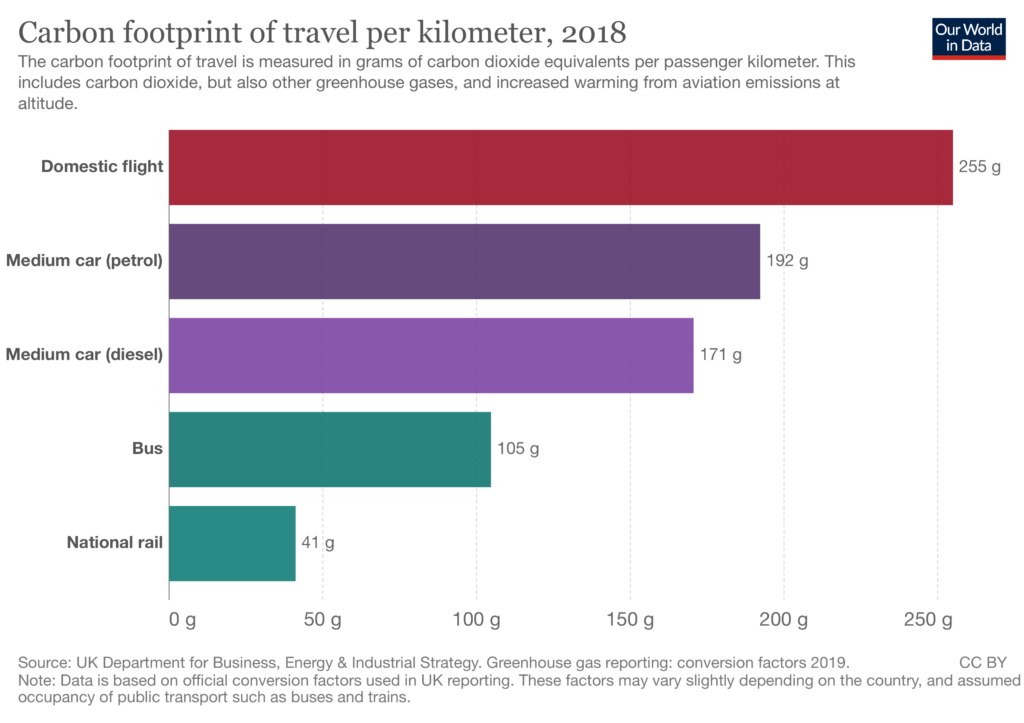
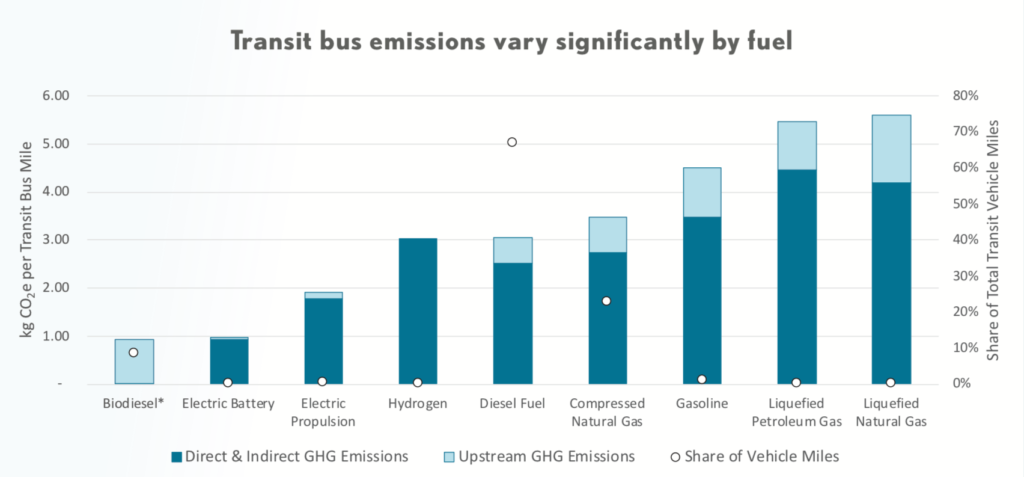
Using the charts above we see that buses emit just over half (55%) the emissions that petrol cars do, per person. Of that, electric buses emit a third of the emissions that diesel buses do. The bus isn’t even the best example, with trains emitting around a fifth of what petrol cars do, per person, and obviously, walking and cycling emitting absolutely nothing.
What should be done?
In behavioural psychology, positive reinforcement refers to a situation in which you reward someone for doing something good. It is widely accepted that behaviour is much more likely to be changed though this rather than punishment for doing something bad. If you encourage a child you’ll get much better results than if you punish them, and here the Irish saying “Mól an óige agus tiocfaidh sí” (praise the young and they will flourish), rings true. The thing about it is, that this also applies to adults. We need to make it worthwhile for people to shift to public transport, by telling people, ‘If you travel on public transport you won’t have to pay anything at all’’. By making public transport free, you are rewarding people for making a good decision.
As to how much it would cost: In 2019, Minister for Transport Shane Ross announced that free public transport would cost an additional €600 million a year. This sounds like a lot for the government to pay every year (and would rise in our scenario because of more people using public transport), but in the grand scheme government expenditure is not a huge amount, with the government spending €98.6 billion last year. (Yes billion with a “b”)
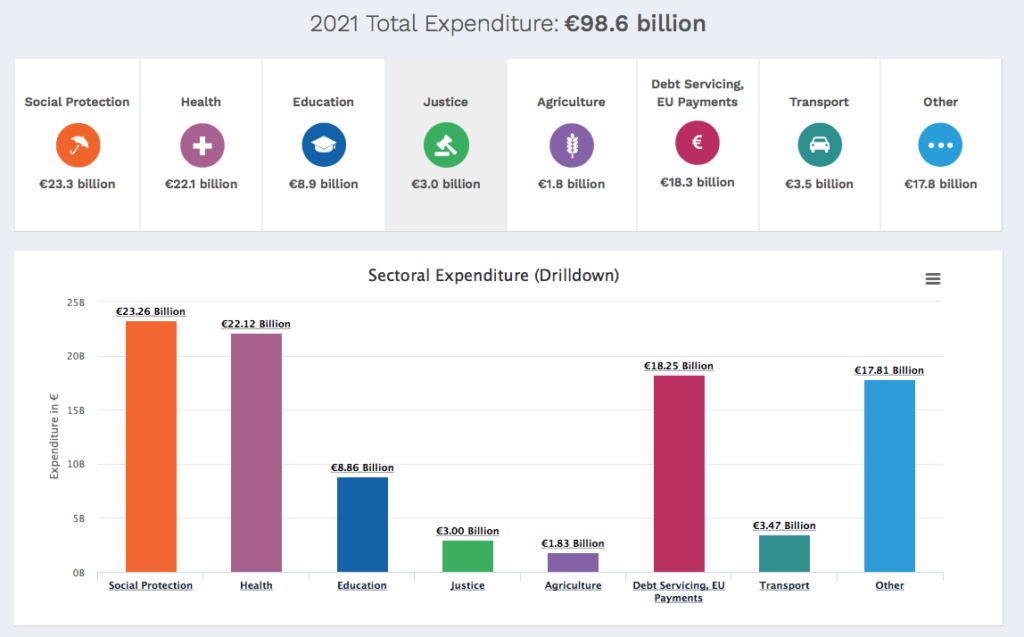
Along with this, free public transport means people have more money in their pocket to spend on other things, growing the economy, paying tax on the goods and services they buy, and in turn, driving back down the Debt to GDP ratio.
This does however need to be a two pronged approach. Make it less appealing to drive in a car, while making it far more appealing to use public transport.
In Central London, you have to pay £15 a day if you want to drive your car around, on top of the already existing costs of maintaining a car (fuel, servicing, etc). The “congestion cost” alone, however, means that if you drive your car every day, you will be paying an additional £5370 a year. This has created the incentive for Londoners to switch to a public, greener, more efficient form of transport, that also frees up the streets above, with the London Underground or “The Tube”.
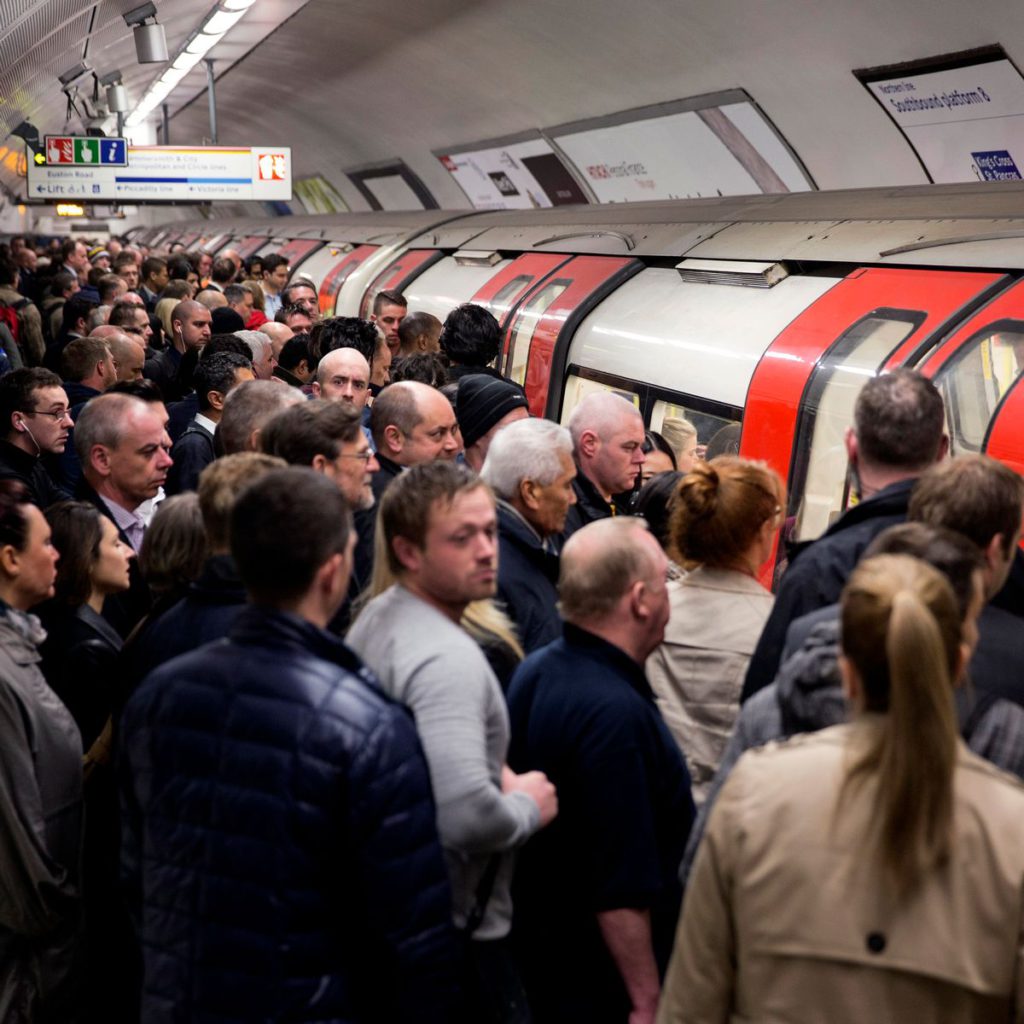
Image: Oli Scarff/Getty Images
This congestion charge, or a similar charge, along with a free public transport system is something that should absolutely be replicated in cities in Ireland, provided that the public transport is expansive enough and up to par.
What action is the government taking/ has been taking?
In the midst of the (now worsening) cost of living crisis, The government announced in February that there would be a 20% cut to public transport fares… from April. Although things are moving in the right direction, the cut is not enough and the implementation is very slow. I mean, how long does it take to do a simple maths equation and cut the cost of each trip?
The government is also planning to greatly expand public transport… in Dublin at least, with the MetroLink. This sounds great for Dublin, until you hear that the original idea for this was decades ago at this point, with the expected completion date being pushed back consistently. The government needs to push forward with this plan.
On top of this, the government is doing the opposite of the idea of positive reinforcement brought up earlier in the article in rural areas. The current strategy is: increase carbon taxes, while not making public transport far more accessible and appealing. This is not rewarding people for travelling on public transport. It is, however, punishing them for something that almost every family in a rural community has no choice but to do; travelling in their car. This is having a detrimental effect on rural communities, just making the rise in cost of living more severe, through the increase of carbon taxes.
The government needs to hugely improve and expand public transport in rural areas, and again, make it free.
In terms of the current further greening of public transport, Bus Éireann said last year that its current plans were to have 50 per cent of its urban fleet to be low to zero emission vehicles and 30 per cent to be zero emissions by 2025. This is accompanied by plans for half of its nationwide fleet to be zero emission electric or hydrogen models by 2030.
This looks good, but we will have to wait and see if they achieve said goals.

Photograph: Nick Bradshaw
So to summarise…
Transportation accounts for a large amount of greenhouse gas emissions, globally and here in Ireland.
Public transport is more efficient, greener, and often quicker than private transport.
To incentivise people to switch to public rather than private emissions-intensive transport, we need to have a two pronged approach: make it more worthwhile (make public transport free), and make it less desirable to travel in said private emissions-intensive transport, through a type of congestion charge and carbon tax. Not do one or the other but both.
The government has not done enough so far, in terms of cutting the costs and making more accessible and greener; transport.
Conclusion
We need to act on the climate now, and a majorly expanded, greener and free public transport system is an excellent step for the government to take. Will they follow through on this? Well it doesn’t look likely, but maybe they will in the end. However, whether they do in the end or not, it should be pushed for and when we as transition year students are able to vote, each party’s climate policy should be the first thing we look at. As stated at the start of the article, the IPCC reports are “code red for humanity”, “an atlas of human suffering and a damning indictment of failed climate leadership” and show “the world’s biggest polluters are guilty of arson of our only home.”
